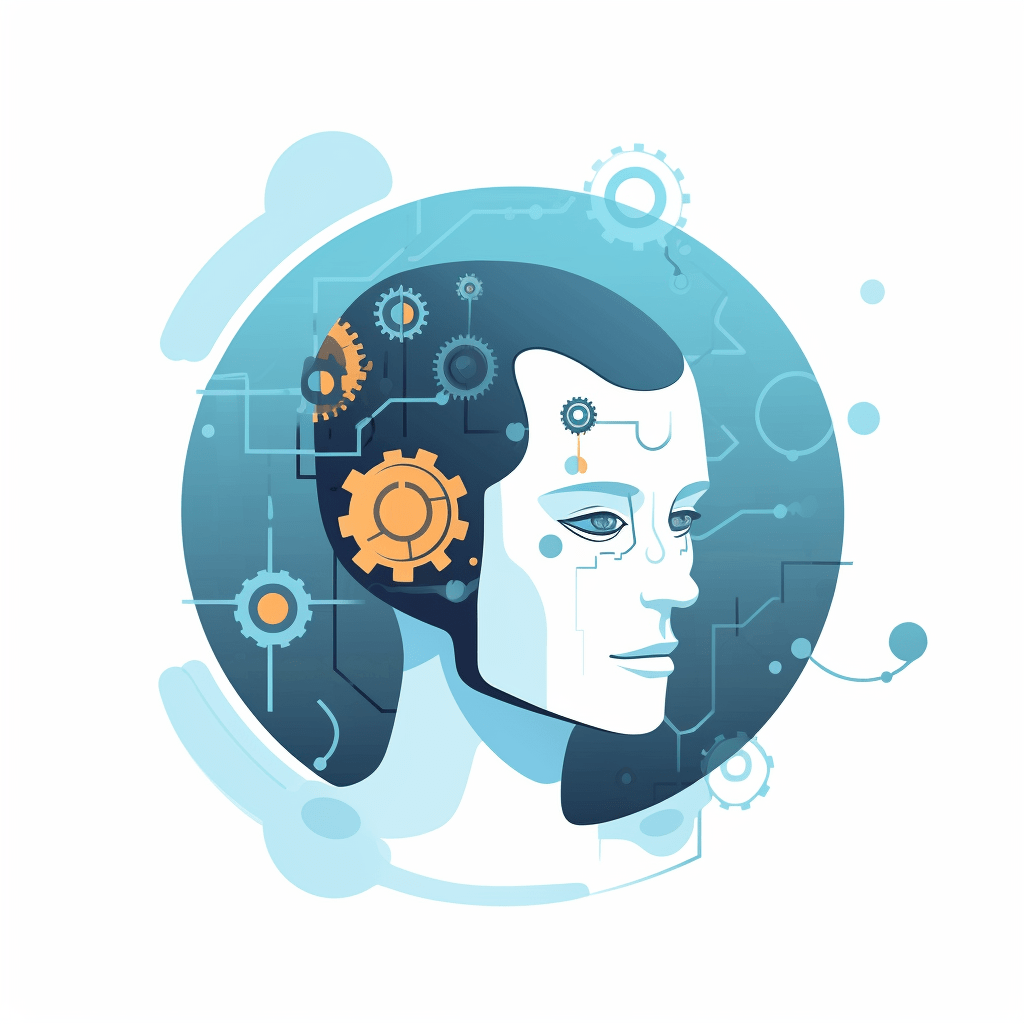1) Fairwater 2 is live at unprecedented scale, with Fairwater 4 linking over a 1 Pb AI WAN
Nadella walks through the new Fairwater 2 site and states Microsoft has targeted a 10x training capacity increase every 18 to 24 months relative to GPT-5’s compute. He also notes Fairwater 4 will connect on a one petabit network, enabling multi-site aggregation for frontier training, data generation, and inference.
2) Microsoft’s MAI program, a parallel superintelligence effort alongside OpenAI
Microsoft is standing up its own frontier lab and will “continue to drop” models in the open, with an omni-model on the roadmap and high-profile hires joining Mustafa Suleyman. This is a clear signal that Microsoft intends to compete at the top tier while still leveraging OpenAI models in products.
3) Clarification on IP: Microsoft says it has full access to the GPT family’s IP
Nadella says Microsoft has access to all of OpenAI’s model IP (consumer hardware excluded) and shared that the firms co-developed system-level designs for supercomputers. This resolves long-standing ambiguity about who holds rights to GPT-class systems.
4) New exclusivity boundaries: OpenAI’s API is Azure-exclusive, SaaS can run elsewhere with limited exceptions
The interview spells out that OpenAI’s platform API must run on Azure. ChatGPT as SaaS can be hosted elsewhere only under specific carve-outs, for example certain US government cases.
5) Per-agent future for Microsoft’s business model
Nadella describes a shift where companies provision Windows 365 style computers for autonomous agents. Licensing and provisioning evolve from per-user to per-user plus per-agent, with identity, security, storage, and observability provided as the substrate.
6) The 2024–2025 capacity “pause” explained
Nadella confirms Microsoft paused or dropped some leases in the second half of last year to avoid lock-in to a single accelerator generation, keep the fleet fungible across GB200, GB300, and future parts, and balance training with global serving to match monetization.
7) Concrete scaling cadence disclosure
The 10x training capacity target every 18 to 24 months is stated on the record while touring Fairwater 2. This implies the next frontier runs will be roughly an order of magnitude above GPT-5 compute.
8) Multi-model, multi-supplier posture
Microsoft will keep using OpenAI models in products for years, build MAI models in parallel, and integrate other frontier models where product quality or cost warrants it.
Why these points matter
- Industrial scale: Fairwater’s disclosed networking and capacity targets set a new bar for AI factories and imply rapid model scaling.
- Strategic independence: MAI plus GPT IP access gives Microsoft a dual track that reduces single-partner risk.
- Ecosystem control: Azure exclusivity for OpenAI’s API consolidates platform power at the infrastructure layer.
- New revenue primitives: Per-agent provisioning reframes Microsoft’s core metrics and pricing.
Pull quotes
“We’ve tried to 10x the training capacity every 18 to 24 months.”
“The API is Azure-exclusive. The SaaS business can run anywhere, with a few exceptions.”
“We have access to the GPT family’s IP.”
TL;DW
- Microsoft is building a global network of AI super-datacenters (Fairwater 2 and beyond) designed for fast upgrade cycles and cross-region training at petabit scale.
- Strategy spans three layers: infrastructure, models, and application scaffolding, so Microsoft creates value regardless of which model wins.
- AI economics shift margins, so Microsoft blends subscriptions with metered consumption and focuses on tokens per dollar per watt.
- Future includes autonomous agents that get provisioned like users with identity, security, storage, and observability.
- Trust and sovereignty are central. Microsoft leans into compliant, sovereign cloud footprints to win globally.
Detailed Summary
1) Fairwater 2: AI Superfactory
Microsoft’s Fairwater 2 is presented as the most powerful AI datacenter yet, packing hundreds of thousands of GB200 and GB300 accelerators, tied by a petabit AI WAN and designed to stitch training jobs across buildings and regions. The key lesson: keep the fleet fungible and avoid overbuilding for a single hardware generation as power density and cooling change with each wave like Vera Rubin and Rubin Ultra.
2) The Three-Layer Strategy
- Infrastructure: Azure’s hyperscale footprint, tuned for training, data generation, and inference, with strict flexibility across model architectures.
- Models: Access to OpenAI’s GPT family for seven years plus Microsoft’s own MAI roadmap for text, image, and audio, moving toward an omni-model.
- Application Scaffolding: Copilots and agent frameworks like GitHub’s Agent HQ and Mission Control that orchestrate many agents on real repos and workflows.
This layered approach lets Microsoft compete whether the value accrues to models, tooling, or infrastructure.
3) Business Models and Margins
AI raises COGS relative to classic SaaS, so pricing blends entitlements with consumption tiers. GitHub Copilot helped catalyze a multibillion market in a year, even as rivals emerged. Microsoft aims to ride a market that is expanding 10x rather than clinging to legacy share. Efficiency focus: tokens per dollar per watt through software optimization as much as hardware.
4) Copilot, GitHub, and Agent Control Planes
GitHub becomes the control plane for multi-agent development. Agent HQ and Mission Control aim to let teams launch, steer, and observe multiple agents working in branches, with repo-native primitives for issues, actions, and reviews.
5) Models vs Scaffolding
Nadella argues model monopolies are checked by open source and substitution. Durable value sits in the scaffolding layer that brings context, data liquidity, compliance, and deep tool knowledge, exemplified by Excel Agent that understands formulas and artifacts beyond screen pixels.
6) Rise of Autonomous Agents
Two worlds emerge: human-in-the-loop Copilots and fully autonomous agents. Microsoft plans to provision agents with computers, identity, security, storage, and observability, evolving end-user software into an infrastructure business for agents as well as people.
7) MAI: Microsoft’s In-House Frontier Effort
Microsoft is assembling a top-tier lab led by Mustafa Suleyman and veterans from DeepMind and Google. Early MAI models show progress in multimodal arenas. The plan is to combine OpenAI access with independent research and product-optimized models for latency and cost.
8) Capex and Industrial Transformation
Capex has surged. Microsoft frames this era as capital intensive and knowledge intensive. Software scheduling, workload placement, and continual throughput improvements are essential to maximize returns on a fleet that upgrades every 18 to 24 months.
9) The Lease Pause and Flexibility
Microsoft paused some leases to avoid single-generation lock-in and to prevent over-reliance on a small number of mega-customers. The portfolio favors global diversity, regulatory alignment, balanced training and inference, and location choices that respect sovereignty and latency needs.
10) Chips and Systems
Custom silicon like Maia will scale in lockstep with Microsoft’s own models and OpenAI collaboration, while Nvidia remains central. The bar for any new accelerator is total fleet TCO, not just raw performance, and system design is co-evolved with model needs.
11) Sovereign AI and Trust
Nations want AI benefits with continuity and control. Microsoft’s approach combines sovereign cloud patterns, data residency, confidential computing, and compliance so countries can adopt leading AI while managing concentration risk. Nadella emphasizes trust in American technology and institutions as a decisive global advantage.
Key Takeaways
- Build for flexibility: Datacenters, pricing, and software are optimized for fast evolution and multi-model support.
- Three-layer stack wins: Infrastructure, models, and scaffolding compound each other and hedge against shifts in where value accrues.
- Agents are the next platform: Provisioned like users with identity and observability, agents will demand a new kind of enterprise infrastructure.
- Efficiency is king: Tokens per dollar per watt drives margins more than any single chip choice.
- Trust and sovereignty matter: Compliance and credible guarantees are strategic differentiators in a bipolar world.



